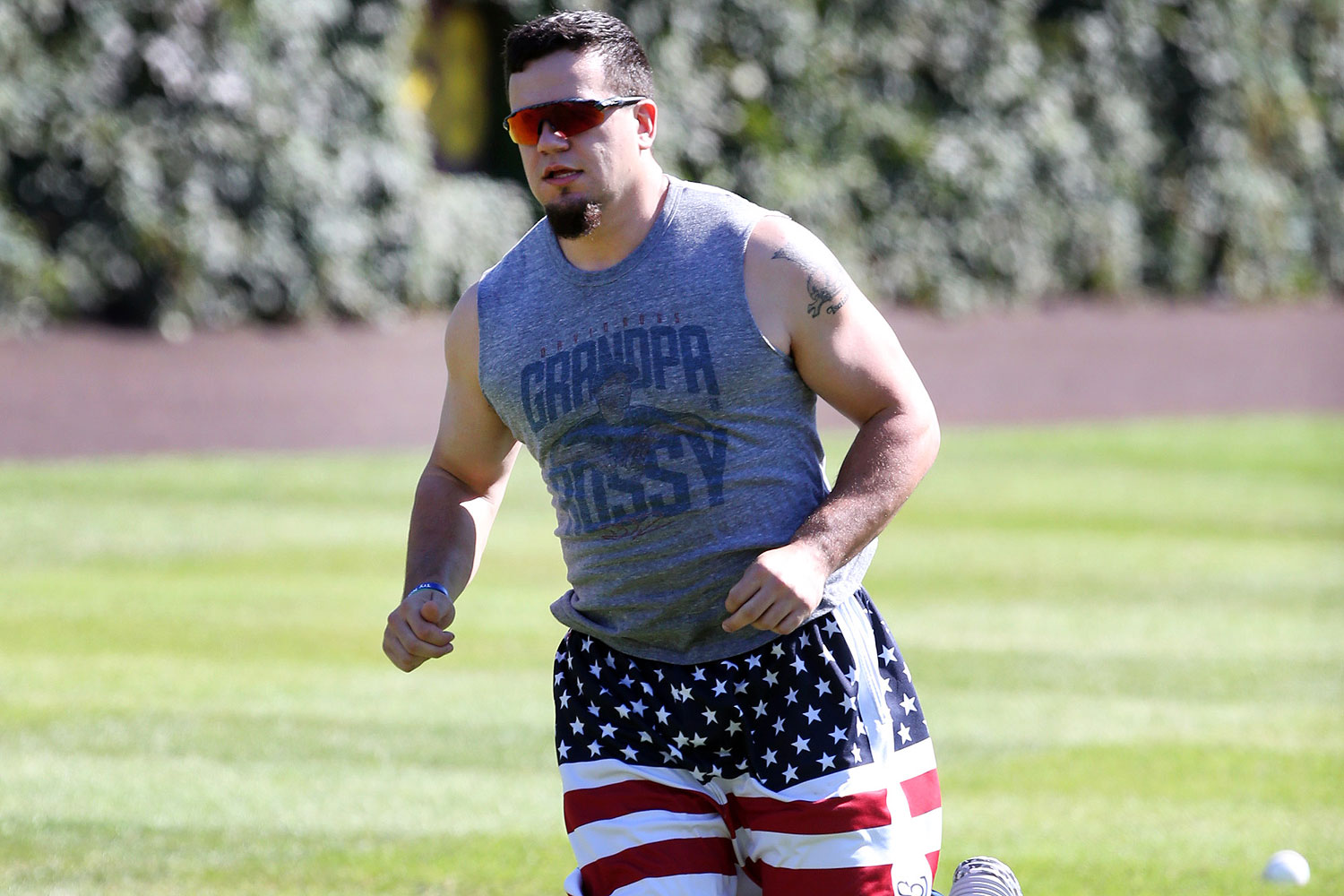Just a couple hours ago, the Cubs settled on a tough decision—adding Kyle Schwarber to their World Series roster, just a week after being medically cleared and hours after he flew into Cleveland. It's another twist for a team that continues to top its own narratives, but there was a reasonable case against it.
Dave Cameron outlined one. The Cubs had decent alternatives at DH: Willson Contreras, who's hit .400/.429/.500 this postseason; Miguel Montero, a respectable hitter against left-handers (.720 OPS); Chris Coghlan (awful this season, but with a solid second half); and Jorge Soler, if they wanted Contreras behind the plate.
As both Cameron and the Trib's David Haugh predicted, including Schwarber means losing Rob Zastryzny. The case for him, as Cameron describes it, is not sexy, but he could have been of use: "since the Cubs aren’t really carrying a traditional long man, he’s the natural choice to soak up innings if a starter gets hammered and the team ends up in a blowout. With Zastryzny on the roster, the team would have to use relievers they’d rather have fresh for important late-game matchups, and so Schwarber’s roster spot would leave them a bit vulnerable to having overworked relievers if one of the starters doesn’t work deep into a game."
Zastryzny is inexperienced, with all of eight appearances in his major-league career, and though he pitched well in them, he had a 4.33 ERA in Triple-A this year and a 4.28 ERA in Double-A. As Rob Arthur noticed, the 2016 playoffs have been a high watermark for the trend of increased bullpen usage, but Zastryzny would have been the team's last choice.
On the other hand, Schwarber runs counter to the Cubs' approach in the 2016 season, one defined from the beginning by fielding skill, baserunning ability, and positional flexibility. He's unlikely to field; while deceptively fast, he doesn't look 100 percent; and he hasn't had an at-bat in months.
It's a risk, but it's a risk that addresses a weakness, however mild, of the Cubs' lineup: a lack of power against right-handed pitching, in a series that will likely have the Cubs facing nothing but right-handed starters.
The Cubs had the third-best offense, by wRC+, the fourth-best pitching staff by WAR, the third-best starting rotation, the best defense, the fifth-best baserunning, and they jumped from the 24th-best bullpen in the first half to the eighth-best in the second half after addressing that need. They're good at about everything, except hitting right-handed pitching.
They had the best offense by wRAA (weighted runs above average) against left-handers, but 8th against right-handers. They're third-best in isolated power and second-best in OPS against left-handers, and are 13th and 9th against righties.
It's not that the Cubs are bad against right-handed pitching, but even a diminished Schwarber could be a better option than Montero or Coghlan. He'll DH in Game 1 against the Indians' ace, Corey Kluber, who's slightly less effective against left-handed hitters.
Curiously, it gets trickier after Kluber. The likely starter for Game 2 in Cleveland is Trevor Bauer, a right-hander who's a bit more effective against left-handed batters. If Bauer's drone injury hasn't healed, it'll be Josh Tomlin, whose reverse-platoon split is much more dramatic than Bauer's. Danny Salazar, a potential starter after returning from injury, is yet another right-hander with a big reverse-platoon split.
It gets weirder. The Indians' best weapon, the big left-handed reliever Andrew Miller—who's pitched the second-most innings for them in the post-season behind Kluber—also has a reverse-platoon split, though a .523 OPS against left-handed hitters is still brutal.
On one level, the case for Schwarber is simple: he's a big left-handed power bat on a team that could use one. But the Indians' pitching staff is a weird one, with its maze of unexpected platoon splits. Even against a normal team Schwarber's current abilities and inabilities would make for complex managerial decisions; in the World Series, it will be a considerable test for one of baseball's most creative managers.



